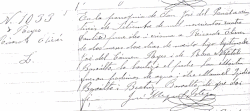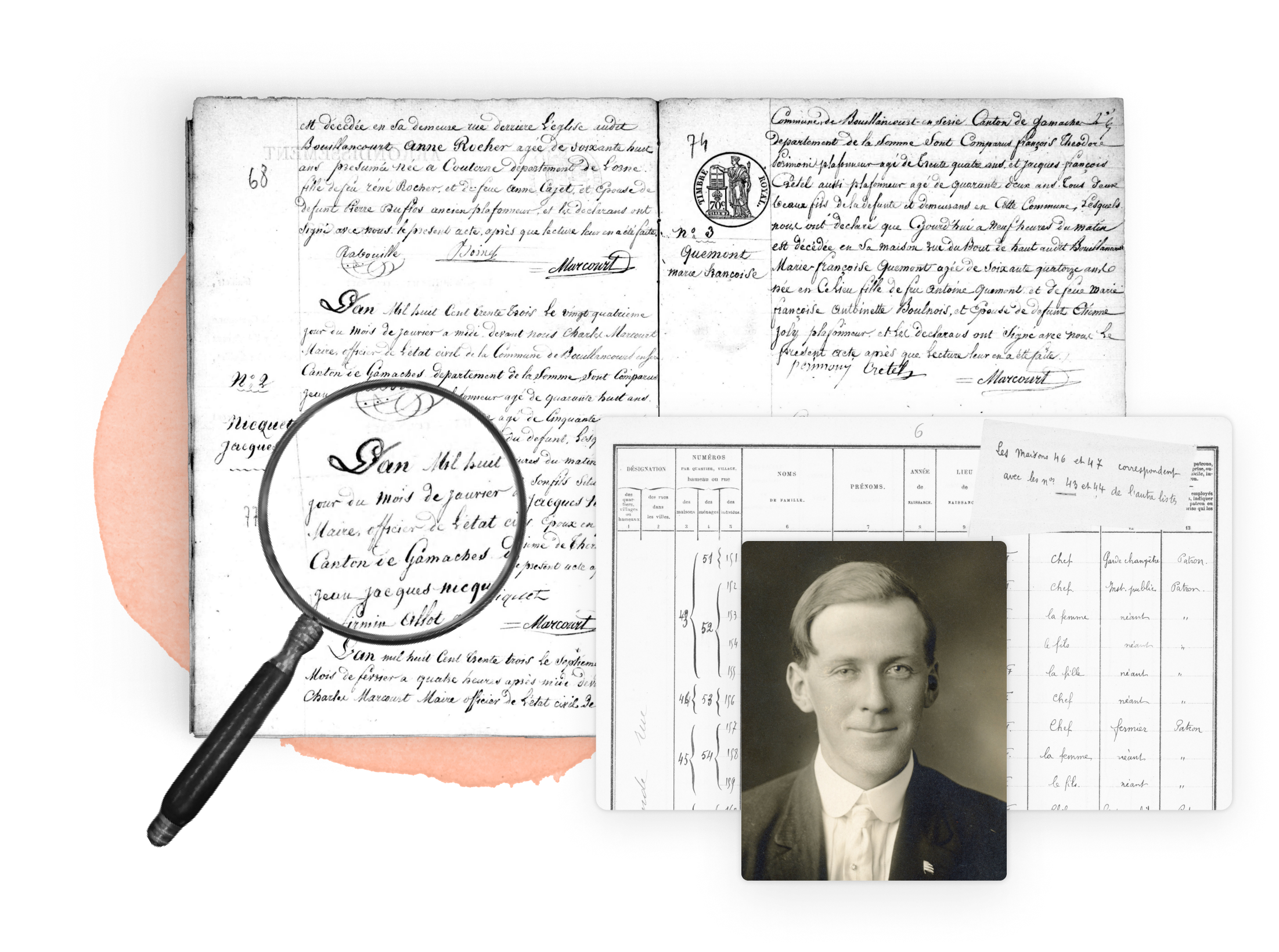
Hispanic surnames are family names found in the portion of the Americas comprising the Spanish-speaking countries of North, South, and Central America, known as Hispanoamérica in Spanish.[1][2]
Similar to Spain, Hispanic people typically take two surnames, one from their paternal side and one from the maternal side, with the paternal surname coming first, a custom that was made mandatory in the 19th century.[3]
While most Hispanic surnames originate in Spain, which ruled the region from the arrival of Columbus in 1492 until the mid-1800s (with the exception of Cuba and Puerto Rico, which were lost to the USA after the Spanish-American War of 1898), many surnames are of Basque, Catalan, Native American or even Sub-saharan origin.[4]
History of Hispanic surnames
Surnames were brought to Latin America with the Spanish conquest, and they were applied to all children born in the colonies, as well as to the Native American servants and Subsaharan slaves after they were baptized.[2] Those assigned surnames became hereditary. However, during the colonial period and up to the late 1800s, the norm among criollo and Peninsular Spanish families to use y (and) between the paternal and maternal surnames, like the liberator of five South American countries, Simón José Antonio de la Santísima Trinidad Bolívar y Palacios.
Hispanic naming conventions

Across Latin America, people use two surnames, inheriting their first surname from their fathers and their second from their mothers, a practice brought by the Spanish colonial authorities. Children of single parents generally have only one surname.[2] However, in recent times, some countries like Colombia, Ecuador, and Uruguay have allowed reversing the order of the surnames.
In most Latin American countries, especially in high-society environments, the husband's surname is added after the woman's surname using the conjunction de (of). Thus Amalia González, married to Luis Zubillaga, may be addressed as Amalia González de Zubillaga. However, this format has no legal value, except in Argentina, Venezuela, and the Dominican Republic.[5]
Hispanic surnames of Spanish origin
See also Spanish surnames
The vast majority of Hispanic surnames are of Spanish origin. Spaniards have immigrated to Latin America since the days of the Spanish Colony and until the late 1950s, either searching for a better future in the last two centuries, as administrators of the different Viceroyalties and General Captaincies, or as part of the nobility and their assistants. The originating region is very diverse, with the Canary Islanders forming the majority of the settlers in Cuba, Venezuela, and Puerto Rico;[6] Castile, Galicia, and Andalusia in the Southern Cone; and Extremadura, Andalusia, and Castile in the Andes and Central America. When baptizing Native American servants or freeing baptized Subsaharan slaves, they were usually given surnames tied to the slave owner, the plantation, or even the saint associated with the name of their birth, all of Spanish origin.[7] As is the case with surnames in Spain, a plurality of the Spanish surnames in Latin America are patronymic.
Hispanic surnames of Catalan origin
See also Catalan surnames
While Catalonia was part of the Kingdom of Aragon, the Spanish colonies in the Americas were considered possessions of Castile, and their colonization and trade were under the control of Casa de Contratación in Seville,[8] which was part of Castile. While Aragonese were not explicitly forbidden from trading with the American colonies or traveling there, the fact that they spoke a different language posed a challenge as all the colonial institutions were in Castilian hands. However, when the Bourbons came to the throne after the death of the last Habsburg monarch of Spain in the early 1700s, they abolished the separation between Castile and Aragon, creating a more centralized kingdom. Still, Catalans remained focused on Mediterranean trade, while the trade with the American colonies continued in Castilian hands.
The first real wave of Catalan migration to the American colonies took place in the late 1700s, after the Hispanization policies of the Kingdom of Spain restricted the use of Catalan for most purposes.[9] Most of the Hispanic surnames of Catalan origin can be found nowadays in Cuba and Puerto Rico, as these islands were the destination of most of the first Catalan immigrants,[10][11] as well as the second one at the beginning of the 20th century, which started during the Spanish Civil War. Some popular Hispanic names of Catalan origin are Rosselló, Malaret, Font, Carbonell, Ferrer and Balaguer.
Hispanic surnames of Basque origin
See also Basque surnames
The first wave of Basque immigration to Latin America took place in the early days of the colony as conquerors and catholic missionaries but in some places, the immigration was constant and in larger numbers, like Argentina, Colombia, and Chile, where it is estimated that up to 27% of the population is of Basque origin, with 21 of the country's 34 presidents having at least one Basque surname.[12] Many slaves were given rare surnames of Basque origins, like Luengo, Rentería, Urrutia, and Liendo. The surname Chourio, exclusive in the Maracaibo Lake Basin in Venezuela among Afro-Venezuelans, comes from the word in Euskera Txuri, which means “white”. [13]
Hispanic surnames of Native American origin

See also Mesoamerican and Andean surnames
While most Native Americans and Mestizos received a Spanish surname when they were baptized in the days of the colony, as early as the late 1600s, in some regions with a large majority of Native Americans, like the Guajira Peninsula in Venezuela and Colombia,[14] the Andean Plateau and the Yungas between Peru and Bolivia, the Guatemalan Highlands, the Central and Chiapas Highlands in Mexico, the Araucanía in Chile and Argentina and the whole of Paraguay (the only Latin American country with an indigenous official language spoken by 90% of the population).[15] Surnames in the local indigenous languages are common, usually denoting the name of the clan or a totem of the Native American nation the person belongs to or a toponymic, and on some occasions, occupational surnames of Native American origin can be found as well. Unfortunately, misspellings were common, due to the fact the registrars were not speakers of the local languages and the Native American languages were not written languages back then.[4][16][17]
Hispanic surnames of Subsaharan origin
While most slaves brought to Latin America were given Spanish or Basque surnames by their owners, in some cases they were given names related to the area of Africa they were brought from, or the tribe they belonged to, like Carabalí, Matamba, Lucumi, Angola, Arará, Ambuila, and Malembo.[18]
Celebrities with Hispanic surnames
- Jennifer López, Puerto Rican singer, actress, and dancer
- Alexander Emmanuel "Alex" Rodríguez, Dominican baseball player
- Camila Cabello, Cuban-American singer
- Diego Armando Maradona Franco, Argentinian footballer
See also
- Iberian ethnicity
- Mesoamerican and Andean ethnicity
- Indigenous Amazonian ethnicity
- Native American ethnicity
- Colombian surnames
- Cuban surnames
- Dominican surnames
- Uruguayan surnames
- Mexican surnames
- Mexican-American surnames
- Puerto Rican surnames
- Catalonian surnames
- Spanish surnames
- Basque surnames
- Latin American surnames
Explore more about Hispanic surnames
- Search Your Last Name on MyHeritage
- Historical records from Latin America on MyHeritage
References
- ↑ Cabrera, Nicolás. DOS APELLIDOS: WHEN FAMILIES HAVE TWO SURNAMES. Blair-Caldwell African-American Research Library. November 17, 2020
- ↑ 2.0 2.1 2.2 De Platt, Lyman. Hispanic Surnames and Family History. Genealogical Publishing Company, 1996. ISBN 978-0806314808
- ↑ Orígenes de los apellidos (I). El Peruano. September 21, 2019
- ↑ 4.0 4.1 Flores, Mariana. Apellidos indígenas más comunes en México a 500 años de la resistencia de Tenochtitlán. El Heraldo de México. August 13, 2021
- ↑ VENEZUELA: Uso de apellido de esposas por maridos va a la Corte. IPS-Inter Press Service. 1995
- ↑ Parsons, James J.The Migration of Canary Islanders to the Americas: An Unbroken Current Since Columbus. Cambridge University Press, 1988
- ↑ Cuba Manrique, María del Carmen ANTROPONIMIA E IDENTIDAD DE LOS NEGROS ESCLAVOS EN EL PERÚ. Universidad Nacional de San Marcos. 2002
- ↑ Acosta Rodríguez; González Rodríguez, Adolfo; Vila Vilar, Enriqueta. La Casa de la Contratación y la navegación entre España y las Indias. Sevilla: Secretariado de Publicaciones de la Universidad de Sevilla, Centro de Estudios Hispanoamericanos del Centro Superior de Investigaciones Científicas y Fundación El Monte, 2004. ISBN 8400082060.
- ↑ de la Cierva, Ricardo (1981). Historia general de España: Llegada y apogeo de los Borbones (in Catalan). Planeta. p. 78. ISBN 8485753003.
- ↑ Cifre de Loubriel, Estela. La Formación del Pueblo Puertorriqueño: La Contribución de los Catalanes, Baleáricos y Valencianos. Instituto de Cultura Puertorriqueña, 1975. ISBN:9788439934110
- ↑ Catalonian Influences in the Caribbean. Havana Times
- ↑ Presidentes de la República de Chile. Library of the National Congress of Chile
- ↑ Lombardi Boscán, Ángel R. (2014). Fundadores en Perijá. Mestizos, Migrantes y Guerreros de Nerio Enrique Romero González. University of Zulia.
- ↑ Urquijo Ortiz, Andrea. Los indigenismos léxicos en el español de Colombia. Instituto Caro y Cuervo - Colombian Ministry of Culture
- ↑ Romero, Simón. An Indigenous Language With Unique Staying Power. The New York Times
- ↑ Reino Garcés, Pedro.Los apellidos indígenas tenían un significado que ya se trastocó desde 1673. El Telégrafo. August 30, 2015
- ↑ Ramírez, Natacha. Compilan los más de 8 mil apellidos mapuches que están registrados en Chile: Revísalos aquí. El Mercurio. June 04, 2019
- ↑ Apellidos Africanos en Colombia


